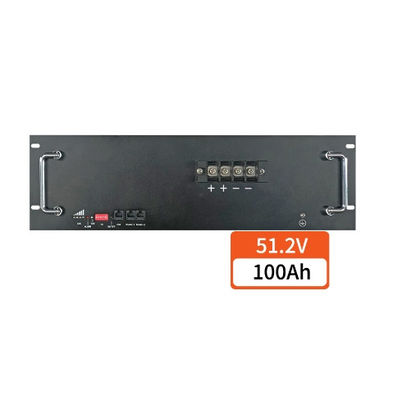Product Introduction:
This product is composed of high-quality lithium iron phosphate cells(by series and parallel) and advanced BMS management system,It can be used as anindcpcndcnt DC power supply or as a "basic unit" to form a variety of energy storage lithium battery powersystems, High reliability and longer life. lt can be used asbackup power supply of communication base station,backup power supply of digital center, household energystorage power supply,industrial energy storage powersupply,etc,It can be seamlessly connected with mainsuch as UPS and photovoltaic power equipment generation.
Performance characteristics:
1.Small size and light weight.
2.Maintenance-free.
3.Environmental protection and pollution-free materials, no heavy metals, green and environmental protection.
4.The standard cycle life exceeds 5000 times.
5.Accurately estimate the state of charge of the battery pack, that is, the remaining power of the battery, to ensure that the power of the battery pack is maintained within a reasonable range.
6.Built-in BMS management system with comprehensive protection and monitoring and control functions.
| Model |
GBP51.2-100R |
GBP51.2-200R |
| Nominal Voltage (V) |
51.2V |
| Nominal capacity (AH) |
105 |
210 |
| Nominal energy capacity(KWH) |
5 |
10 |
| Operating voltage range |
42-54.75 |
| Recommended charging voltage (V) |
52.5 |
| Recommended discharge cut-off voltage (V) |
45 |
| Standard charging current (A) |
20 |
40 |
| (A]Maximum continuous charging current(A) |
50 |
100 |
| Standard discharge current(A) |
20 |
40 |
| Maximum discharge current (A) |
50 |
100 |
| allowable humidity range |
-30℃~60℃(Recommended 10℃~35℃) |
| Storage temperature ('C) |
0~95% no condensation |
| Protection level |
IP20 |
| cooling method |
natural air cooling |
| Life cycles |
5000+times at 80% DOD |
| Maximum size (W*D*H)mm |
480*440*252 |
410*640*252 |

 Your message must be between 20-3,000 characters!
Your message must be between 20-3,000 characters! Please check your E-mail!
Please check your E-mail!  Your message must be between 20-3,000 characters!
Your message must be between 20-3,000 characters! Please check your E-mail!
Please check your E-mail! 









